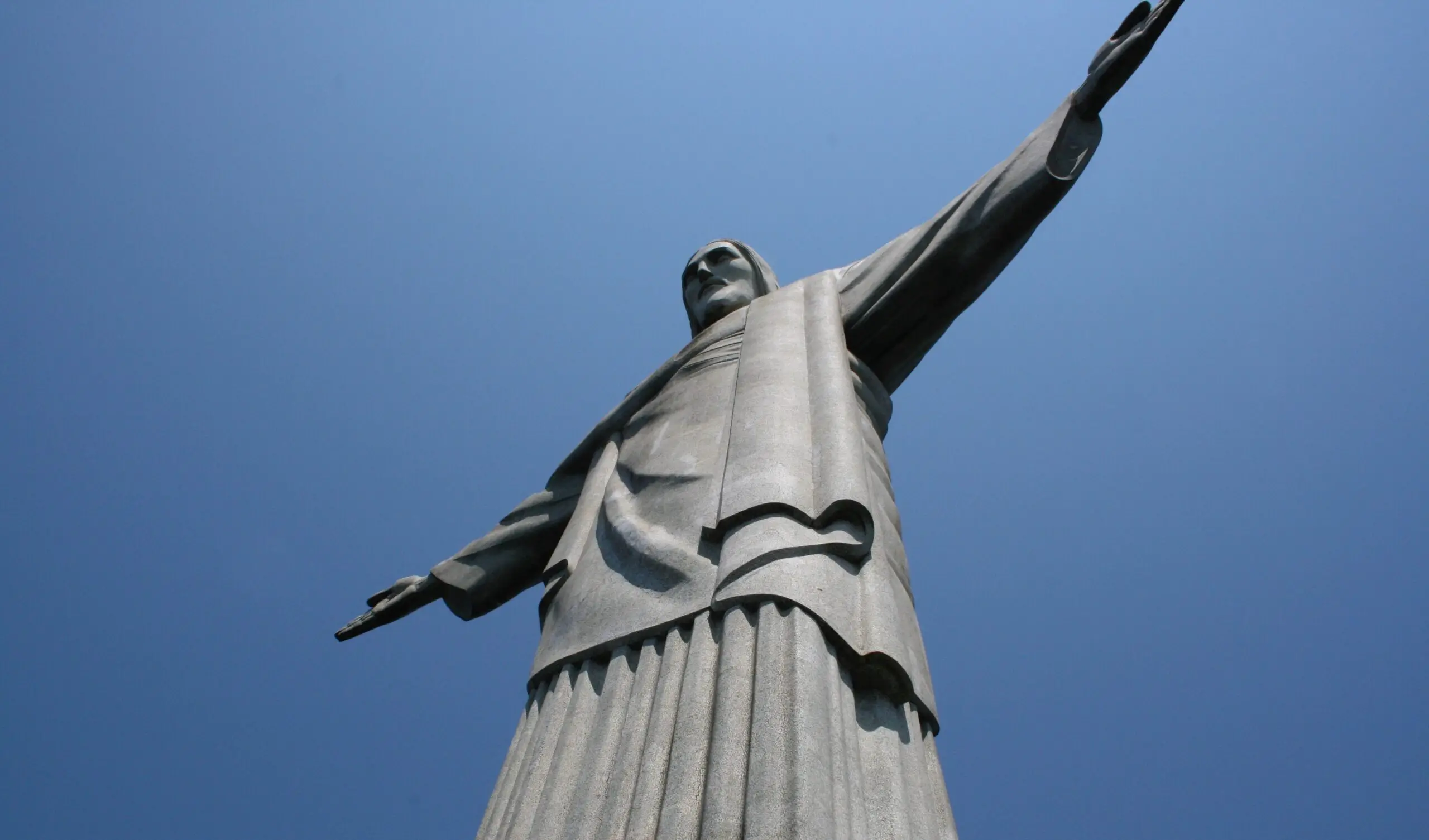Table of Contents
Construction of Cristo Redentor – Statue of Jesus in Rio de Janeiro
Alongside the Inca ruins of Machu Picchu, the statue of Christ the Redeemer in Brazil is one of the most instantly recognizable South American images. Perched atop the Corcovado Mountain and overlooking the vibrant city of Rio de Janeiro, the statue is visited daily by thousands of tourists and pilgrims alike.
Here is a brief history of Christ the Redeemer, from the conception and construction of this Brazilian icon to its selection as one of the New Seven Wonders of the World.
Conceptual History of the Christ the Redeemer Statue, Rio de Janeiro, Brazil

In the mid 1850s, a Catholic priest by the name of Pedro Maria Boss laid eyes upon the Corcovado Mountain in Rio de Janeiro. Inspired by the towering peak rising up imposingly over the city, he imagined a monument to his faith placed upon it for all to see. In order to realize his vision, Father Pedro sought approval from Isabel I, then Princess Imperial of Brazil, in whose honor the statue would be built.
The flattery of such a proposal did not have the desired effect. Princess Isabel was largely unimpressed, and the project failed to gain momentum. With the overthrow of the Brazilian monarchy in 1889, and the birth of the new Republic, the idea was all but buried. The separation of church and state was proclaimed, making the construction of such a religious monument impossible.
The Second Proposal for the Statue of Christ the Redeemer in Brazil
In 1921, a new proposal emerged for the construction of a religious monument atop Corcovado. This time, the Archdiocese of Rio de Janeiro itself gave voice to the new scheme. Largely bypassing the state coffers, funds were raised directly from donations made by the Brazilian Catholic community.
With both public support and financial backing acquired during a construction drive known as “Monument Week” (Semana do Monumento), the design phase went ahead. Artist Carlos Oswaldo was commissioned to design the statue; initial sketches had Christ carrying a cross, a globe, and standing on a pedestal representing the world.
However, the citizens of Rio were not enamored by Oswaldo’s designs. A concept drawn up by Brazilian civil engineer Heitor da Silva Costa was chosen – an image of Christ the Redeemer with arms outstretched, open to the public below.
The Construction of the Christ the Redeemer Statue – Cristo Redentor
Work on the Christ the Redeemer statue began in 1926. French sculptor Paul Landowski (of Polish ancestry) was placed in charge of construction with Heitor da Silva Costa overseeing the project. Much of the construction was carried out in France, the pieces then shipped over and taken to the site on top of Corcovado for assembly. The previously built Corcovado railway played a key role in the construction project.
Christ the Redeemer was built using reinforced concrete, with the outer layers clad in soapstone. Soapstone was chosen for its durability over time and its resistance to the effects of extreme weather conditions. A lightning strike left the statue unscathed thanks to the insulating nature of this protective shell.
Five years and $250,000 later, the statue of Christ the Redeemer in Rio de Janeiro was completed. The opening ceremony took place on 12 October 1931, with Brazilian President Getúlio Vargas in attendance.
The Statue of Christ the Redeemer in Brazil, One of the New Seven Wonders of the World
Today, the iconic statue of Christ the Redeemer attracts over 300,000 visitors a year. Notable figures to have made the trip to the top of Corcovado include Pope Pius XII, Pope John Paul II, Albert Einstein, Diana, Princess of Wales and Brazilian aviator and national hero Alberto Santos Dumont.
In 2007, the statue of Christ the Redeemer was selected, somewhat controversially, as one of the New Seven Wonders of the World. A Brazilian national icon, Christ the Redeemer is also the largest Art Deco statue in the world – 39 meters tall and weighing almost 700 tons.

It’s not a matter of where, but when. Time is precious and my time spent living and experience the cultures of this world is what I lust for. This is why I created this website, to share true, genuine experiences and not just typical touristy info. Travel, the love of coffee, and food!
